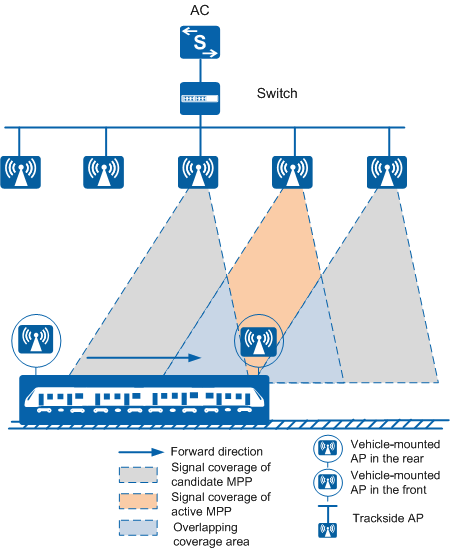Signal Coverage Models of Vehicle-Ground Fast Link Handover
A train has a fixed forward direction. Therefore, vehicle-ground APs all use directional antennas to enhance signal strength and mitigate interference. In Figure 1, the antenna on the working vehicle-mounted AP faces the forward direction of the train. Antennas on trackside APs face the opposite direction, with a certain angle deviation. In this way, the vehicle-mounted AP always moves within the optimal coverage area of the trackside APs.

- If only the vehicle-mounted AP in the rear of the train works, the antennas of trackside APs should tilt in the forward direction of the train to achieve optimal signal coverage.
- If both the vehicle-mounted APs in the front and rear of the train work, use dual-band APs (such as dual-5G AP8130DNs) as trackside APs. To achieve optimal signal coverage, install two directional antennas on each trackside AP, with one antenna tilting in the forward direction of the train and the other in the opposite direction.
Wind resistance in rail tunnels may affect coverage of AP antennas. When a train passes through a tunnel at high speed, a turbulent airflow is induced. Strong turbulent airflows may cause angle offset of antennas. Wind-resistant Yagi antennas with small cross-sectional areas can solve this problem. Huawei's vehicle-ground communication network uses external Yagi antennas on trackside APs and external Yagi or panel antennas on vehicle-mounted APs.
